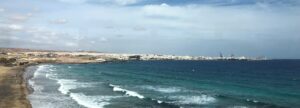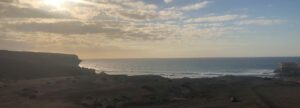The municipality of Pájara was founded by farmers and fishermen at the beginning of the 16th century. The total area of the area is about 383 square kilometers; With 150 kilometers (70 kilometers of which are beaches), Pájara has the longest coast in Spain. The inhabitants of the municipality live mainly on the coasts of Jandía. Tourism forms the economic basis of the municipality of Pájara, in whose territory the tourist centers Morro Jable / Jandía and Costa Calma are located.
Due to the excellent conditions - in terms of sea, wind, marine fauna and flora - the coast of Jandía is an ideal area for divers and surfers. It is therefore no coincidence that the finals of the world windsurfing championship take place on the coast of Pájara. Agriculture is the second mainstay of the region. The main fishing ports are Ajuy, La Lajita, Morro Jable and Punta de Jandía. The progress made in the use of solar and wind energy in the municipality of Pájara is also worth mentioning.
The greatest differences in altitude on the island can be found in the municipality of Pájara. The island rises from the huge Playa de Cofete over rugged mountain slopes and reaches its highest point in the southwest of the Jandía peninsula on the Pico de la Zarza (807 meters). Then it slopes gently towards the beaches of Sotavento.
The beaches of Sotavento are among the most beautiful in Western Europe. Here the sand is white, the water near the shore is emerald green and turns into a deep blue.
In contrast: Barlovento on the windward side, with rugged coastlines and a rough sea. Pájara offers impressive nature, which is framed by the 220 km² Parque Natural de Jandía. Of particular historical interest in Pájara is the parish church of Nuestra Señora de Regla, completed in 1733, whose facade contains Aztec elements. The town hall and the plaza are also worth seeing.






